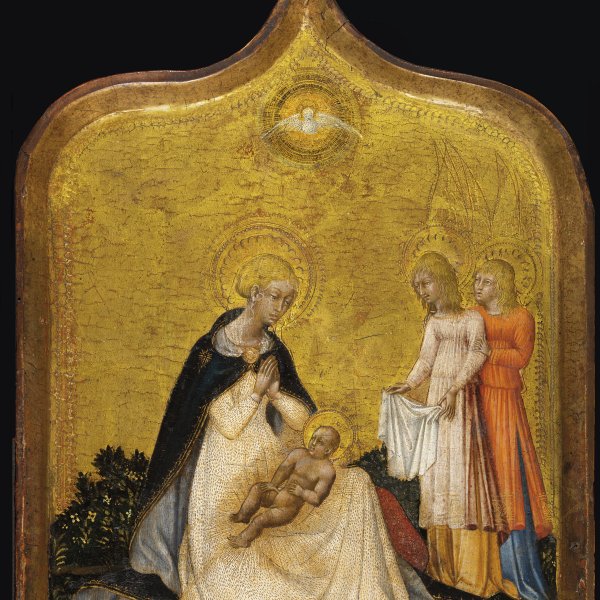Giovanni di Paolo
Siena, ca. 1399-1482
Born in Siena, probably at the end of the 14th century, Giovanni di Paolo was a painter and illuminator. Although nothing is known of his training it is thought that he may have learned his profession with artists such as Gregorio di Cecco, Benedetto di Bindo or Martino di Bartolomeo. He is first mentioned in a document of 1417 relating to a payment for a Book of Hours. Giovanni di Paolo’s work, particularly his early output, reveals the influence of late Gothic painting, particularly the Sienese school, with its sinuous lines and interest in decorative elements, which he was able to combine with imaginative brilliance. His work evolved stylistically, partly through his knowledge of the work of artists such as Gentile da Fabriano, who lived in Siena from 1426 to 1427, evident in a new emphasis on naturalist details. Clear examples of this evolution are the paintings for the church of San Domenico in Siena (now Pinacoteca Nazionale, Siena) of around 1420; The Pecci Polyptych (now divided between the Pinacoteca Nazionale, Siena, and the parish church of Castelnuovo Berardenga) of 1426; and the Branchini Polyptych (Norton Simon Museum, Pasadena) of one year later. In 1441 Giovanni di Paolo was made rector of the Ruolo dei Pittori in Siena, while during that decade he collaborated with Sano di Pietro and formulated his mature style. During these years the influence of Sassetta and the new generation of Sienese painters, as well as some elements of Florentine painting, are to be seen in his work. His compositions now reveal a greater monumentality in the forms and a more pronounced sense of three-dimensionality. From this period onwards Giovanni di Paolo created most of his masterpieces and his workshop received numerous commissions. They include the panel of The Creation and Expulsion from Paradise (The Metropolitan Museum of Art, New York), while slightly later is a series of ten scenes from the life of Saint Catherine, now divided between various collections. His last works were less innovative and reveal a greater degree of workshop intervention. Giovanni di Paolo dictated his will on 29 January 1482 and died in March of that year.





